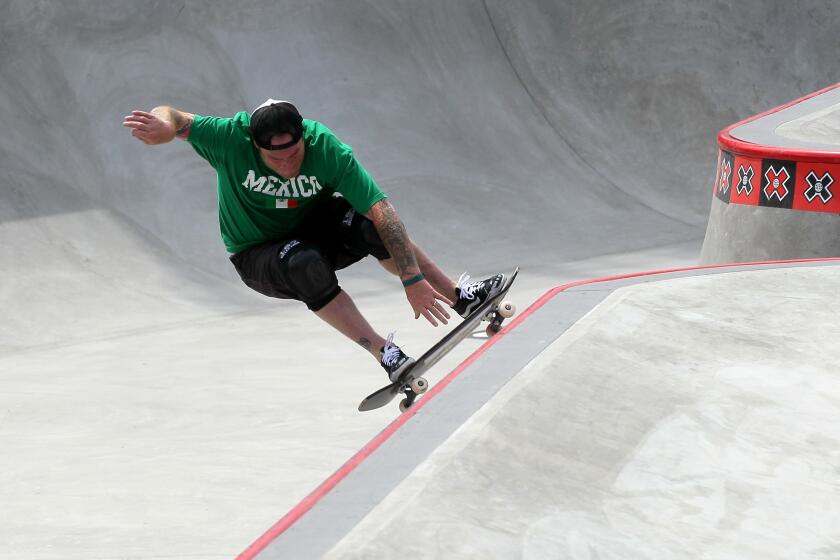
- Share via
Jeff Grosso’s first skateboard wasn’t much.
It was a hand-me-down miniature-sized banana board he got from his mom’s boss when he was 8 years old. Even for 1977, it was antiquated, with rickety old clay wheels and worn-out bearings. Grosso barely knew how to stand on the thing, struggling to keep his balance without toppling to the ground.
But for a curious boy whose childhood home was next to a steep hill, there was an instant connection. He would sit on his back or lie flat on his stomach and let gravity take over. Every time he bombed down the street, he fell more in love with the feeling.
“Initially, it was the rush of going down a hill, and the wind in your hair,” Grosso once said. “Poetic nonsense.”
The skateboarding world looks much different now than it did then. Its ever-increasing popularity is pulling the fundamentally subversive sport into the mainstream. Formerly relegated to back alleys and sparse concrete parks, it is now set to debut on the Olympic stage during this summer’s Tokyo Games.
But somewhere at its core, the lust for that poetic nonsense remains.
No one understood it quite like Grosso.
Jeff Grosso died last year of an accidental drug overdose. Here’s a primer on what made him a skateboarding legend.
“He was the gatekeeper to why skateboarding was cool,” said skateboarding legend Tony Hawk.
Grosso looked an unlikely figure for such a role. He didn’t have a long pro career, flaming out at the end of the 1980s, hardly spanning the decade. He battled drug addiction and suicidal depression. By his late 20s, it seemed like his life had bottomed out.
But then he rebounded, embodying the resiliency that has defined the entire history of his sport.
Grosso became an ambassador, speaking for skateboarding’s soul through his beloved “Loveletters to Skateboarding” YouTube show. He was a guardian and a helping hand to skateboarding’s newest generation.
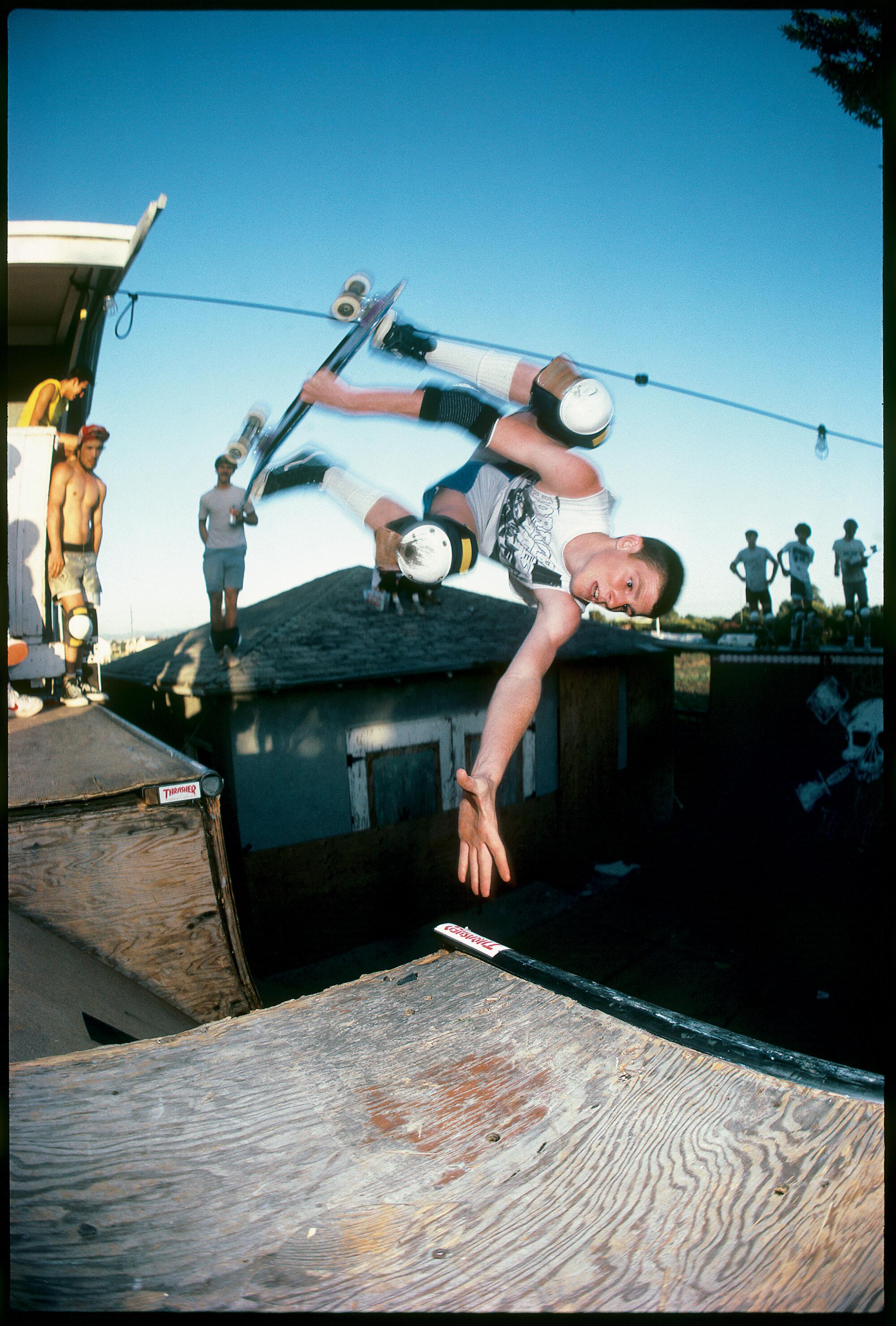
In many ways, he was like a north star, his effervescent personality and endearing pertinacity emitting a guiding light through the sport’s most transitional times.
And when he died unexpectedly last March of an accidental drug overdose, it left a void the skateboarding world is still trying to fill.
To best understand skateboarding — its counter-culture roots, its rise to the Olympics, its helter-skelter tale of competing styles, clashing customs and self-sabotaging plot twists — it’s best to understand someone like Jeff Grosso.
Complicated. Flawed. But an authentic source of joy to the end.
::
“It’s a total rush. It’s the feeling that when you go out there with your board, it’s a no-hero type of thing. And you either accomplish something or you don’t.” — Jeff Grosso, to the St. Louis Dispatch in 1986.
The rarest sight in skateboarding might be a frown.
Even after a failed trick or nasty wipeout, most skaters are wired to smile, laugh, shake off the dust, and climb back on their boards.
That carefree disposition is what initially captured Grosso’s interest. A stubborn and expressive freckle-faced kid born in Glendale in 1968, he felt like an outcast from a young age. He liked to draw, read “Lord of the Rings” and listen to punk rock. He picked contrarian arguments during conversations simply to spark a debate. And he moved around a lot as a kid: from the hillside house in Eagle Rock, to Las Vegas for a year with his mom, and then to Arcadia for the start of fifth grade.
Though he was naturally athletic, he found the structured pressure of team sports arbitrary and suffocating.
Only when he was on a skateboard did Grosso truly feel free.
“You have this culture of kids that need that,” said his mother, Rae Williams. “They need to go and do this and be creative and come up with new tricks and try different things.”
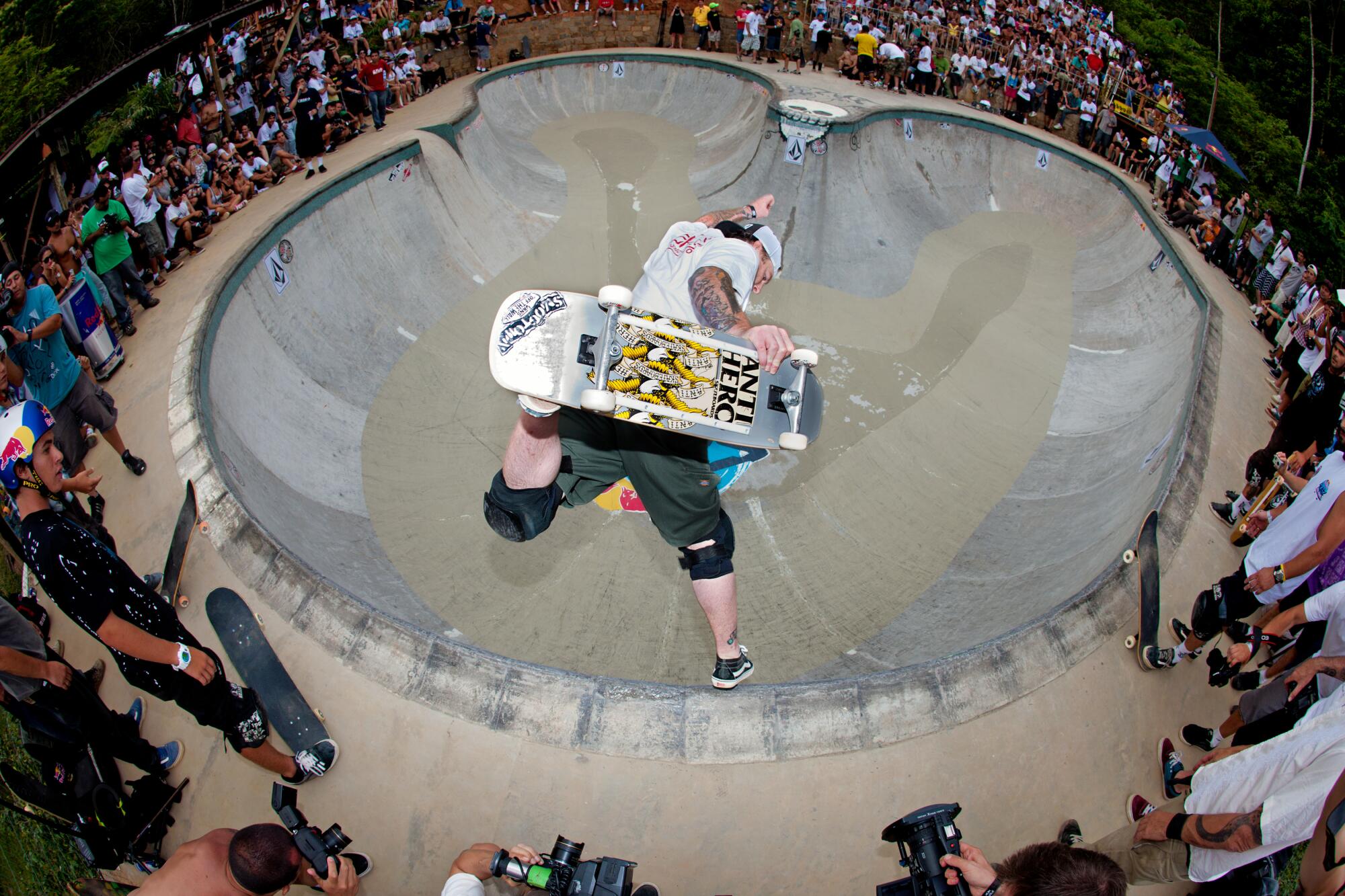
Like Grosso, skateboarding’s subversive identity was almost baked in from the start.
Originally popularized in the early 1960s by Southern California surfing companies innovating dryland alternatives, the sport was quickly tagged with a dangerous reputation. In 1965, the California Medical Assn. called it “a new medical menace.” Cities across the country banned the activity on public sidewalks and streets.
It has teetered on the fringes of mainstream society ever since.
Its popularity spiked in the early ‘70s. Improvements to the board and wheels gave birth to more ambitious vertical skating, a style defined by gravity-defying aerial tricks off half-pipes and vertical ramps. A string of Southern California droughts turned empty swimming pools into skating bowls. Rapid construction of skate parks nationwide soon followed, bringing millions of kids to the sport.
It wouldn’t last.
The newly opened parks soon faltered under liability issues and financial distress, and the young demographic of riders once fueling the boom grew up and moved on. By the time Grosso discovered the sport at the end of the ‘70s, only a small community of self-willed skaters remained.
“Skateboarders were very rare at that time,” said Grosso’s childhood friend Eric Nash, the only other kid at their Camino Grove Elementary School who matched Grosso’s passion for the sport. “Jeff enjoyed that rebel spirit. I think that’s who he was.”
Grosso and Nash spent almost every weekend at one of the few Southland skate parks that were left. Grosso was a perfectionist — at home he was constantly rearranging the furniture in his bedroom — and practiced for hours to perfect a trick. Skate City in Whittier became their home base, though sometimes they snuck away to more secluded spots — a cement ditch behind a church in Glendale, an empty washway nicknamed the “V bowl” in Irwindale.
One of their friends, future pro skater Lance Mountain, had a ramp in the backyard of his Alhambra home where the group would spend hours together honing their technique and embracing a recalcitrant culture few others could comprehend.
“We were a bunch of nerds, we were weirdos, we were social outcasts,” Grosso said in a 2015 episode of his “Loveletters” series. “We were the people that nobody wanted to be, doing things that nobody wanted to, and that nobody understood. … We were the freaks. That’s how you rolled. That’s how it was. That’s what drew us to skateboarding.”
::
“The little wooden toy is a kiss and a curse. It’s everything. It’s the best thing that ever happened to me and the worst thing that ever happened to me, all rolled up into one.” — Jeff Grosso, to Juice Magazine in 2006.
Like any good parent, Williams tried to get her son to think about his future as he went through grade school. Skateboarding, she told him, “is fun and can be a pastime, but you can’t make a career out of it.”
Reliving the memory during an interview, Williams stopped herself and laughed.
“Boy, were we wrong.”
Instead, as Grosso went through his teenage years in the mid-1980s, the sport became cool again.
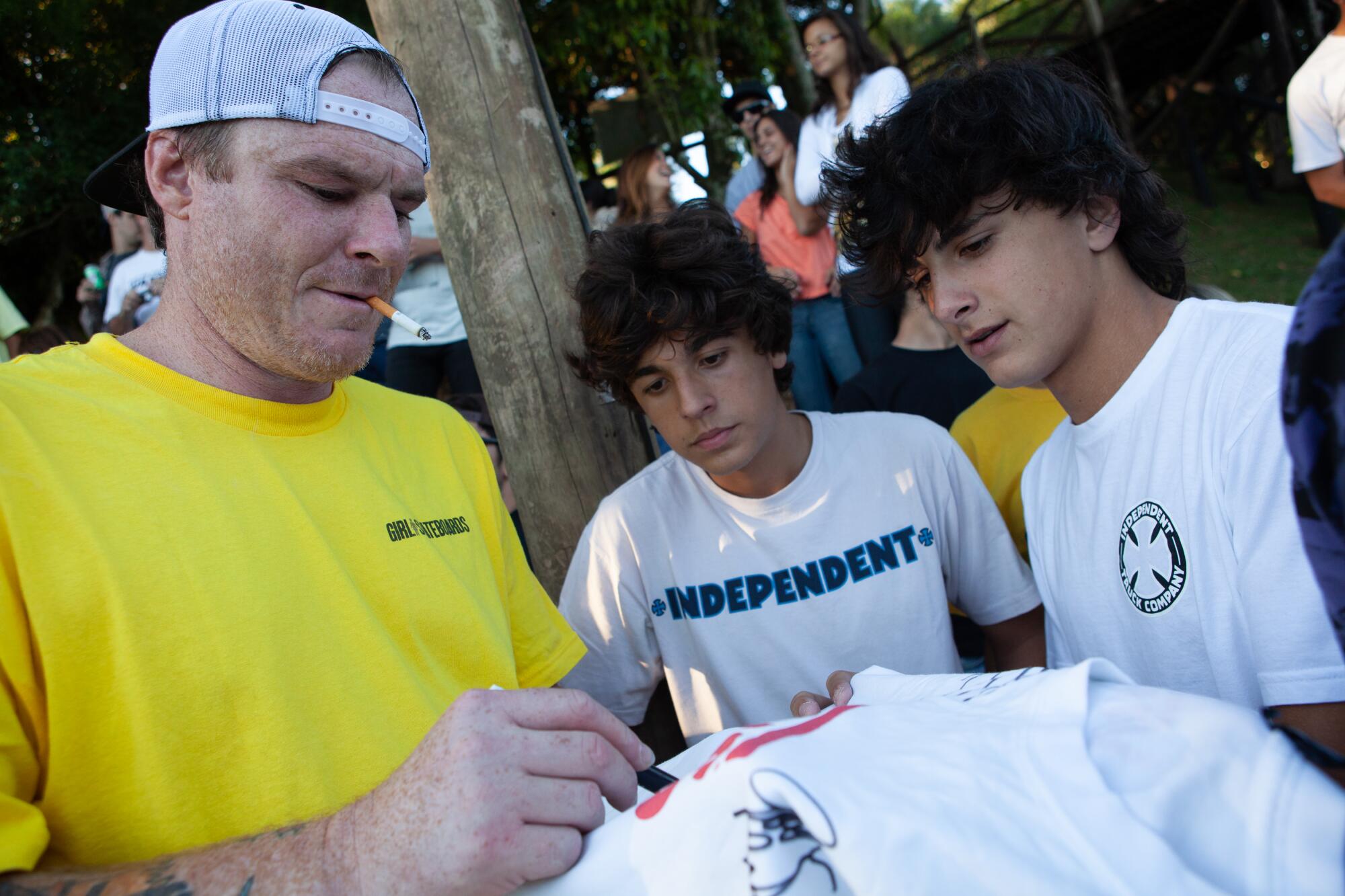
Vertical skateboarding benefitted from the formation of the popular National Skateboarding Assn. contest circuit. Skateboarding scenes in hit films such as “Back to the Future,” “Police Academy 4” and “Thrashin’” reintroduced the sport to a broader audience.
Now top skateboarders had the opportunity to make six-figure incomes through sponsorships and competitive earnings. The timing was perfect for Grosso, who blossomed into a top amateur before dropping out of high school to turn pro in 1986. He was 17.
“Jeff and I had a similar trajectory, in that we both fell in love with skating when it was absolutely at its least popular cycle,” said Hawk, one of the defining skateboarders of the late 1980s. “We loved it because we loved the crew, the misfit aspect, the rebellious aspect. Our whole thing was, we don’t want to fit in, we want to do our own thing. Then suddenly, we found ourselves with some success and fame.”
Competitively, Grosso didn’t match the likes of Hawk, Christian Hosoi and other preeminent skaters of that era. But culturally, his stature was nearly unmatched.
He had many of the bestselling board designs and starred in some of the period’s most prominent skateboarding videos that played an outsized role in promoting skateboarders and their sponsors to fans nationwide.
Grosso’s relatable skating style made him popular, mastering fundamental tricks any amateur skater could mimic on their own.
It was his playfully devious personality, though, that gave him a cult following. In one particularly memorable video, Grosso shaved off his eyebrows before describing the life of a professional skateboarder: “Lounge around all day, do absolutely nothing, until it’s time to ride your wooden toy.”
Later in life, Grosso admitted there were signs of trouble brewing behind that facade. The kid who used to get “tripped out” by seeing older skaters smoke Marlboro Reds was now “smoking pot and drinking and living the rock star lifestyle that I’d come to covet,” he later said. “I started down that path.”
To the skateboarding public, however, his persona was well-received.
“Grosso was the guy you could actually aspire to be like,” said Coan “Buddy” Nichols, a childhood fan of Grosso’s who was later a producer of the “Loveletters” series. “He was loud and crazy, because he was partying, having a good time. That’s a classic thing in skating, to mix the athleticism with real life.”
But like a flickering candle at the end of its wick, those golden days began to fade.
Even though Grosso’s generation revived skateboarding’s popularity, skate parks and vert ramps were still rare in most parts of the country. The new skaters they’d inspired gravitated toward a different style, riding off urban obstacles such as staircases, park benches and handrails.
The new discipline became known as street skating, and by the early 1990s it began to consume the sport. Suddenly, it was no longer cool to be a vert star such as Grosso or Hawk. Contests that once drew thousands began to fold and the sport’s media attention was redirected toward its newest trend.
Worse than that, many skaters felt as though their whole lifestyle had been discarded. Scenes in skating videos featuring their old aerial tricks were skipped over so often that fast-forwarding became known as the “vert button” on the remote. Half-pipes and vertical ramps became so rare that the entire discipline was in danger of extinction.
“We were almost akin to boyband fame,” Hawk said. “And it was all washed away within a year.”
::
“I didn’t think it was ever going to end. I had no concept of what was really going on. I wasn’t making plans for the future. I’m a high school dropout. It was like, ‘I’m a pro skateboarder, and the party is never going to end. I’m indestructible’ … I was wrong.” — Jeff Grosso, to Juice Magazine in 2006.
Grosso woke up one morning in the mid ‘90s and walked to a mirror. He saw that he was still alive. Part of him wished that he wasn’t.
Staring into the reflection, he no longer recognized himself. Only a few years removed from the height of his pro career, his life was spiraling into an abyss.
- Share via
Even after vert skating’s demise, Grosso had tried to stay relevant in the sport. He sold boards for an upstart skating company called Black Label run by John Lucero, another childhood friend and former pro. He traveled to the few slimmed-down competitions that remained. He clung to whatever notoriety he had left.
But as the ‘90s progressed, and the ever-more fragmented skateboarding community floundered during an economic recession, he struggled to reckon with his new reality. He tried to find ways to escape it.
He had a heavy drinking problem, then began using methamphetamine and heroin. His income couldn’t always fully fund his habit, so he sometimes stole VCRs and TVs from friends to sell at pawn shops.
He tried rationalizing his choices, convincing himself that as long as he could keep skateboarding — even if it no longer served as his primary occupation — he was fine.
“I just sort of floated around,” he said. “When you’re hanging around with the kind of people I was, it’s pretty easy. … In one town you’re on speed, and then the next town it’s booze, and the next one it’s heroin. You just keep shuffling the problems around.”
His addictions, however, eventually wore him down.
One night, as he later told Thrasher magazine in 2007, he intentionally tried to overdose at a friend’s house, only to wake up the next day and look into that mirror, realizing it hadn’t worked.
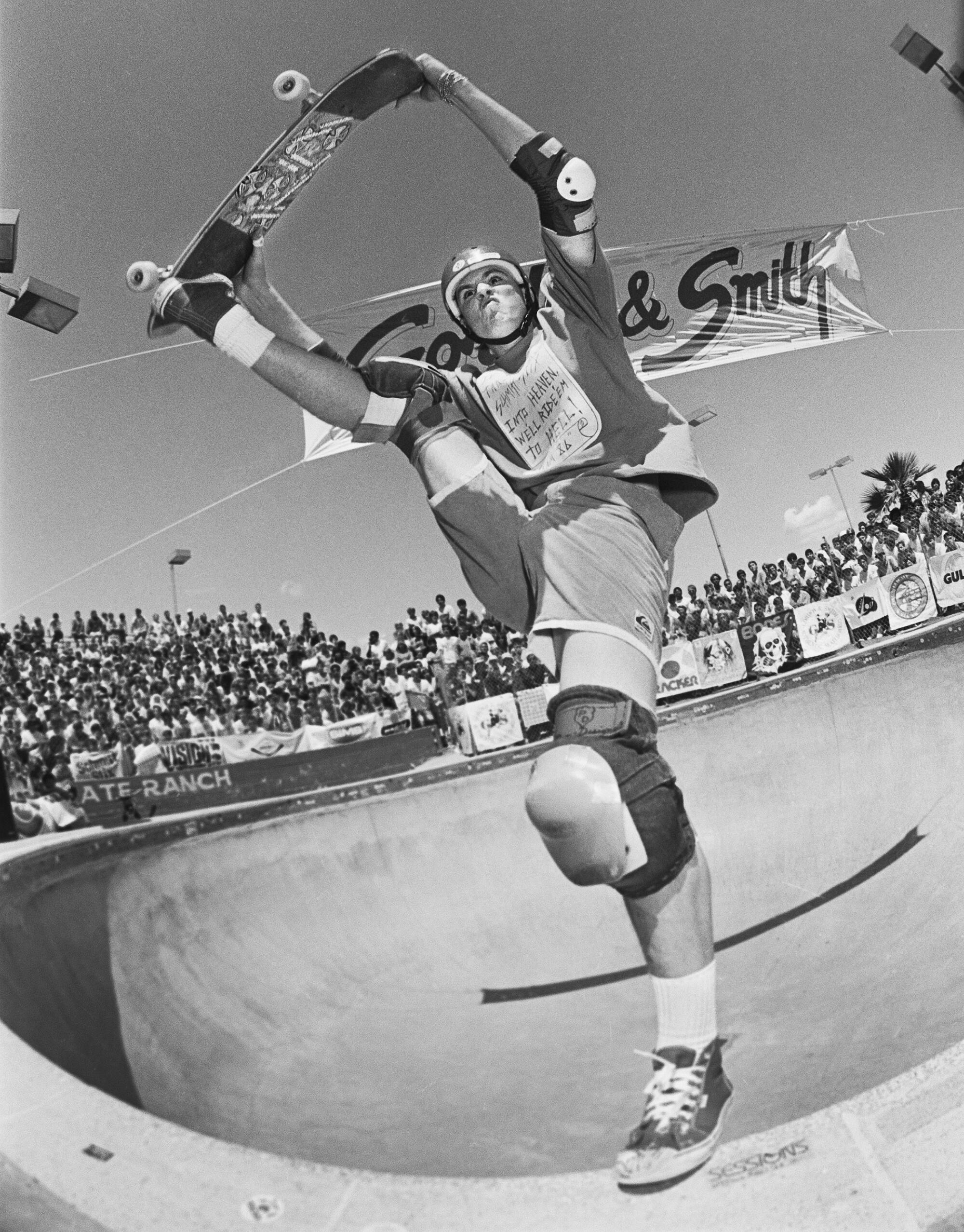
Three other times, he was rushed to the hospital with no vital signs after overdosing, later telling Transworld Skateboarding magazine that one of the incidents had been another intentional attempt.
“When you’re lost in heroin, and you haven’t reached any sort of bottom, you just can’t see out of it,” Grosso said in 2003. “You have to get an extreme amount of pain before you can accept anybody else’s help … It’s a real rough road, man. Trying to get your life back from being a real scumf--- is a really hard thing to do.”
His short-lived pro career wasn’t the only cause for his struggles — “It’s not any one thing, it’s the addiction that’s the problem” his mother said — but it robbed him of the most central element to his identity.
His story wasn’t unique at a time when many notable skaters from his era went to jail or battled substance abuse.
“These guys, they were celebrated while they’re still developing as teenagers, everyone telling them they’re God’s gift to skateboarding,” said Mackenzie Eisenhour, a longtime writer for Transworld Skateboarding. “And then the industry completely shifted. All of a sudden, you’re disposable.”
It would be like the basketball world renouncing Michael Jordan, deciding to no longer buy his shoes, and declaring dunking a thing of the past. The painful irony: Vert skating’s demise was caused by the very same rebellious, subversive dynamics that drew Grosso and his peers to the sport in the first place.
“Skateboarding is an anti-hero culture,” Eisenhour said. “So once the culture deems you the hero, it’s just waiting to rebel against you.”
::
“You know what I really regret? I don’t regret partying. I don’t regret becoming an addict and s---ing my life away. I regret taking my skateboard for granted. I wasted years and years running around doing bulls--- when I could’ve been riding.” — Jeff Grosso, to King Skateboard Magazine in 2016.
For more than two decades, Nichols and Rick Charnoski, his partner at Six Stair Studio, have traveled the world documenting skateboarding and producing films about its culture.
One thing they’ve learned: “Skateboarding has these two directions,” Nichols said. “The sport that some people want it to be — mostly to make money off of it, honestly — and then the lifestyle, everything else around it.”
- Share via
Skateboarding’s history has been entangled by that existential web.
Can the sport be commercially successful and culturally authentic? Can it enter the mainstream without being co-opted? Can it keep an edge without excluding everything and everyone that came before it?
There’s a reason that different styles have competed for its direction, its customs, its icons. It was no surprise that when skateboarding was added in 2015 to the Tokyo Games — one of several action sports the Olympics has introduced in hopes of attracting younger audiences — there was a rebellion against it. Skateboarders started an online petition, which drew 7,500 signatures, asking the International Olympic Committee to reverse its decision and remove the sport from its lineup.
“Skating is sort of a martial art,” Nichols said, “in the sense that style matters almost as much as anything else.”
Admittedly, Nichols and Charnoski weren’t trying to unravel such profound dilemmas when they first teamed up with Grosso for the “Loveletters” show in 2011.
Grosso was just reemerging as a visible figure in the skateboarding community after announcing he’d finally achieved sobriety six years earlier.
It wasn’t an easy process. He said it began in 1997 after he was arrested — once of his several run-ins with the law during the depths of his addiction — and threatened with a prison sentence if he didn’t go to rehab. He tried, staying clean for periods of time before relapsing and starting over again.
“I like to do things the hard way,” Grosso said in 2016 of his recovery. “It’s one of the reasons I was attracted to skateboarding in the first place.”
But little by little, he put his life back together. He found steady work laying hardwood floors. He got married in October 2005 in a beachside wedding in Laguna. (He and his wife divorced after having a son but remained friendly as parents, Williams said.) And he began to talk openly about his struggles in a way that resonated with skaters battling the same issues he had.
“Most people that know me know this bulls--- about me anyways,” he said. “So it’s like, well, why not try and at least make it count for something?”
The more Grosso shared about his personal life, the more he opined on the state of skateboarding too. Vans, which had sponsored Grosso since he was an amateur in 1982, saw an opportunity and connected him with Nichols and Charnoski to create the show for its digital platform.
At first, the three self-described skating nerds focused their episodes — which were formatted like mini-documentaries meant to serve as literal on-camera love letters to specific skating subjects — on niche topics they thought “nobody almost would care about,” Nichols said.
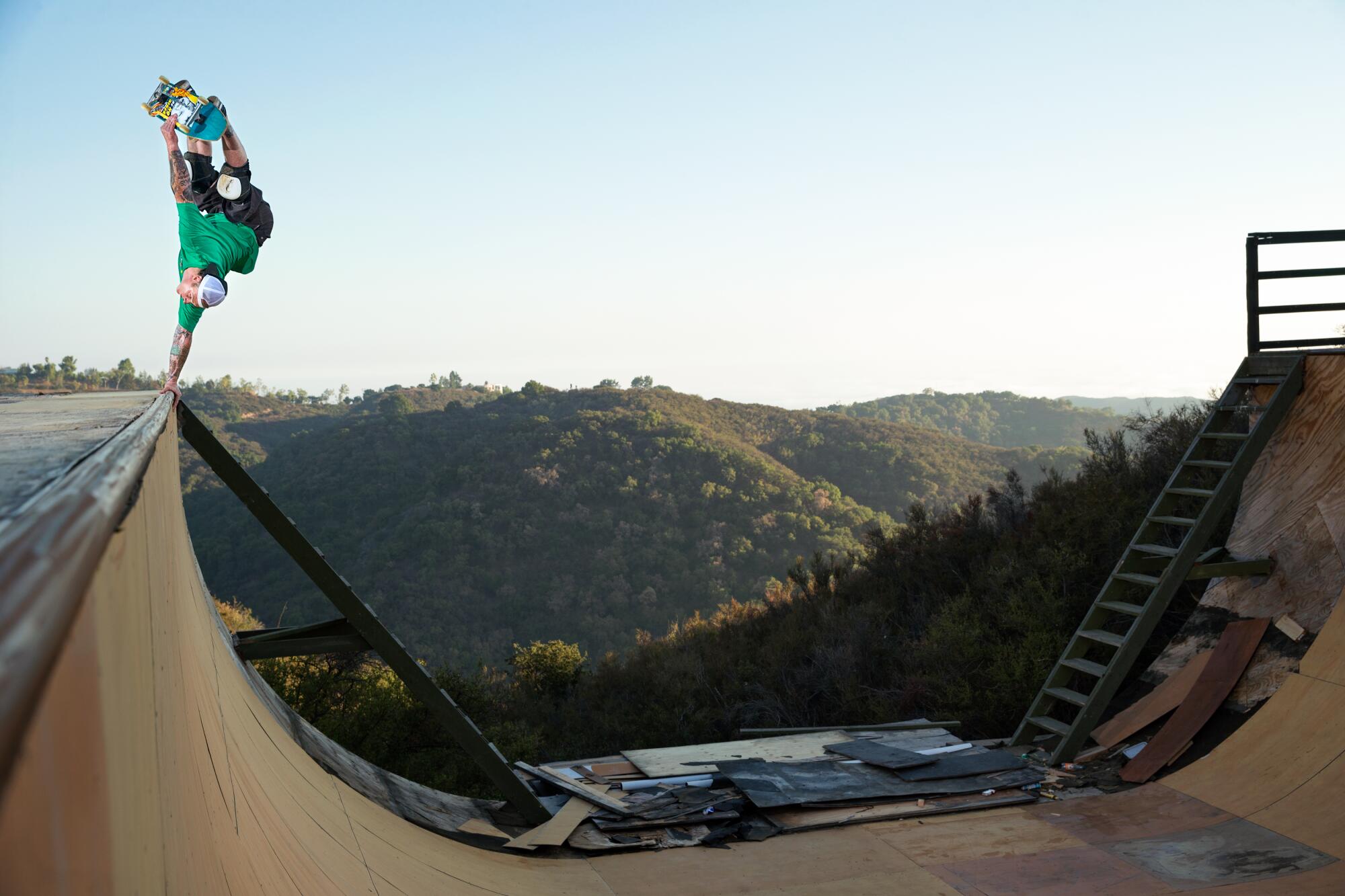
A few examples: Who should get credit for inventing the backside grind (a Florida-based skater Monty Nolder); the lost art of the proper handplant (“one of two tricks I [still] know how to do,” Grosso joked); the history of “Thrasher” skating magazine (the “bible” of skateboarding culture).
The same defiance that endeared Grosso to skating fans decades ago was still there, but now there was a level of wisdom and wistfulness in his words as well — a maturation that was materializing across the entire sport.
“Skateboarding now, it’s old enough; it’s been through all those things,” Charnoski said. “If you want to compare it to the timeline of a person’s life, it’s matured. It’s gotten through its rebellion and it’s growing up.”
The founding of X Games in 1995 helped revive skateboarding’s mainstream popularity, especially after Tony Hawk landed a famous 900-degree-spin in 1999 that reignited interest in vert tricks. A new style known as “park” began to gain prominence — a hybrid discipline mixing vert and street elements performed in specialized concrete bowls. And a sport that once banished its past seemed ready to embrace it at last.
For much of their lives, Tony Hawk’s and Jeff Grosso’s paths would cross, diverge, then cross again. Hawk recalls his fellow skateboarding icon.
With Grosso starring in the “Loveletters” series, the show quickly became an unexpected cult hit that garnered hundreds of thousands of views on YouTube.
“You find out,” Nichols said, “that a ton of people care.”
Over 11 seasons, Grosso and the producers didn’t stop exploring obscure subjects, yet they peeled back deeper layers of skateboarding as well. In recent years, they did episodes on the “underlying philosophy” of the sport; the rise of female stars; skateboarding’s international growth; and, in a collection of videos that aired after Grosso’s death, a love letter to the sport’s LGBTQ+ community.
Said Steve Van Doren, Vans’ vice president of events and promotions: “He’s the person that came into it as a teenager, went through the hard knocks, learned and skated with some of the best who are legends today — including himself — and then keeps it going, keeps pushing it forward.”
::
“At the end of the day, it’s a toy. It’s a toy for children, and kids are always the equalizing factor. … It can’t be corrupted. You can’t f--- with that. You can f--- with everything else, but you can’t f--- with the kids just having a good time in the corner.” — Jeff Grosso, in a 2018 “Loveletters to Skateboarding” episode.
Leonard Cohen’s “Everybody Knows” bellowed in the background as Grosso and his son, Oliver, entered the frame. In the Instagram video posted to Grosso’s account on March 30 of last year, the father and his then 8-year-old son danced to the slow, raspy tunes — Oliver swinging his arms and shaking his hips, Grosso laughing as he twisted to the rhythm behind him.
One skateboard hung from the living room wall. Another leaned against a kitchen refrigerator covered in photos. It was a snapshot of Grosso’s two occupations, skateboarding and fatherhood — a window in the life he’d built.
Less than 12 hours later, Grosso was rushed to Hoag Hospital near his Costa Mesa home in cardiac arrest.
Doctors tried to save his life, putting a breathing tube in his mouth, a fluid line in his shin and defibrillation paddles to his chest. But at 10:15 a.m. on March 31, Grosso was pronounced dead at the age of 51.
The Orange County Sheriff-Coroner’s office later determined his cause of death as acute polydrug intoxication due to the combined effects of fentanyl and phenobarbital. An autopsy listed severe cardiomegaly (enlargement of the heart) with dilatation, a clinical history of hypertension and anxiety, and obesity as other conditions. His death was ruled an accident.
It remains unclear how the phenobarbital, a barbiturate often used to treat seizures and anxiety, or fentanyl, a powerful synthetic opioid similar to morphine but 50 to 100 times more potent, got in Grosso’s system. Fentanyl, which is often present in counterfeit pills, has become one of the leading culprits in drug-caused deaths over the last five years in the Los Angeles area and other parts of the country. Williams declined to comment on the findings of her son’s autopsy.
But those around him are adamant: Despite the manner of his death, they don’t believe Grosso had reverted back to the destructive habits that once derailed his life.
He was in the midst of making a new “Loveletters” season with Nichols and Charnoski. He was helping Vans make half-pipes and vertical skate ramps more accessible to young skaters. He was traveling the world to different competitions, his infectious personality present everywhere he went.
And he cherished his responsibilities as a dad. He never missed a soccer game. He took Oliver trick-or-treating one Halloween even though he had a 2 a.m. flight for China early the next morning. He talked nonstop about his son every time he caught up with old friends.
“He found the thing in life at the end that really drove him,” said Vans’ global digital marketing manager Chris Nieratko, who accompanied Grosso to many events in recent years. “He didn’t shut up about skateboarding. But man, when it came to Oliver, you could not get him to stop talking about that boy.”
::
“We’re old, and it’s not our world anymore. It’s not my world. It’s your world. Don’t let these f---ing people take it from you. Don’t let these people dictate how your world is going to be. Rise up and say, ‘No, I don’t want to be that way.’” — Jeff Grosso, in a 2015 “Loveletters to Skateboarding” episode.
Due to the coronavirus pandemic, the biggest public remembrance of Grosso occurred in a video call that was organized by Vans between some of the sport’s leading voices on Grosso’s birthday last April.
“I just really look forward to doing it in person with our friends,” said Nieratko, who moderated the virtual call. “We just need to hug it out and cry it out.”
The pain was so sharp because skateboarding’s need for Grosso remained so large. He had become the sport’s cool uncle, wiser from his mistakes and unapologetic in his beliefs. He was the protector of its history and traditions. He reminded so many skaters of why they took up the sport.
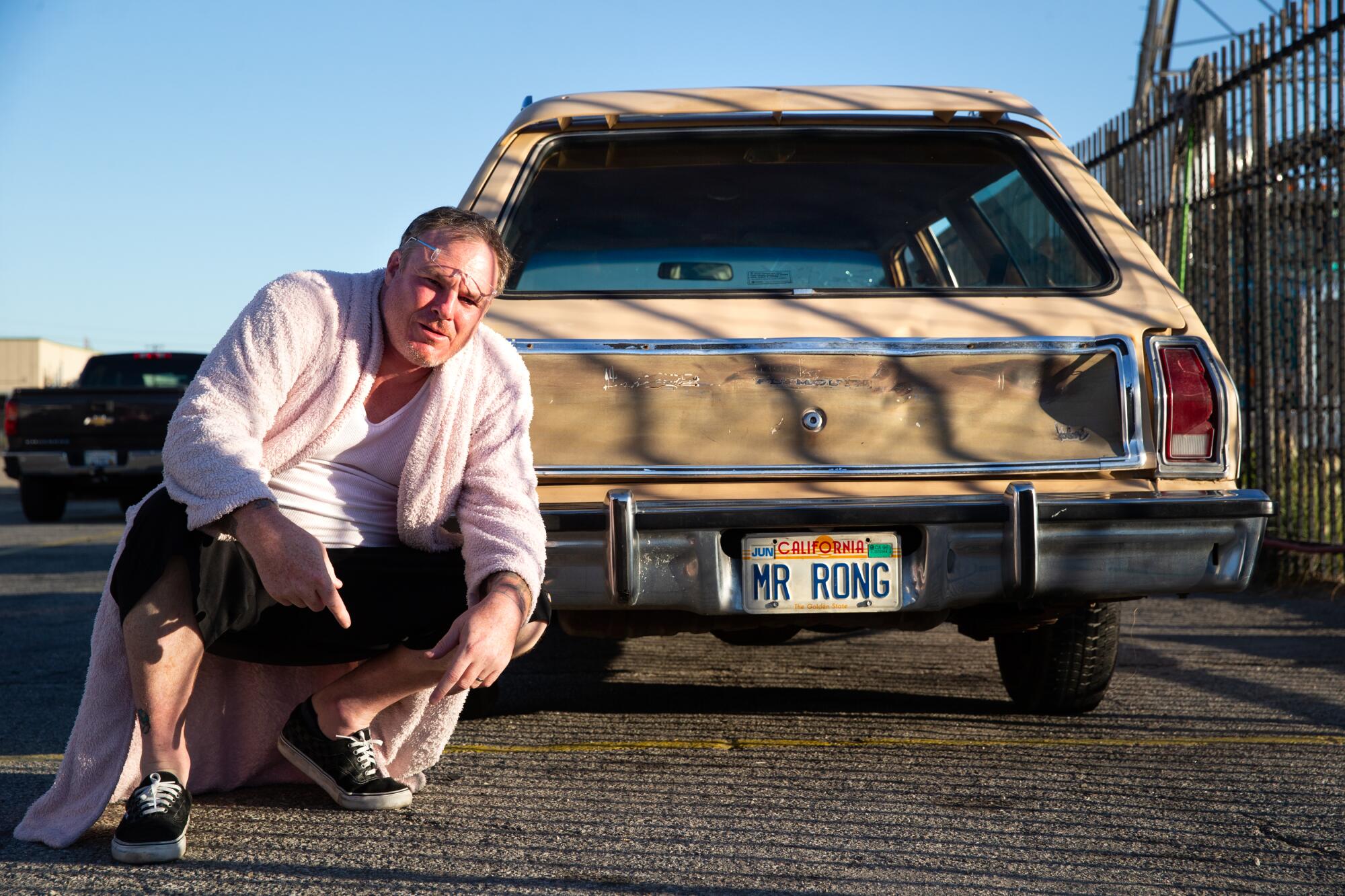
Skateboarding is much different now than it was during Grosso’s career. It’s more organized, more competitive, more lucrative. The civil wars that once raged within its walls — over the coolest styles, the right customs, the direction it should go — have been replaced by a fierce defense of its culture as it expands into a commercialized world.
“The Olympics are coming,” Nieratko said. “A lot of people are going to try to sink their claws into skateboarding. He would always teach the kids, ‘Know your worth, make sure you do right by skateboarding. But also make sure you do right by yourself.’”
Lizzie Armanto, one of the leading female skateboarders in the world, was one of those young athletes Grosso took under his wing. At first, she was intimidated by his booming voice and larger-than-life presence, but over the years, he became one of her closest mentors.
“Skateboarding is kind of like dance,” she said. “You have to feel it. It’s not just about going through the motions. When someone is dancing and they really have mastered it, everyone else who sees it is moved. And Jeff understood that. … When he talked to you he believed in you. He could say whatever, and you know he meant it.”
In an Instagram post after Grosso died, Hawk took Grosso’s impact one step further: “I believe Jeff is a big reason that anyone truly cares.”
Williams found solace in every heartfelt message, every little reminder of how much skateboarding had given her son — and how much he had given right back.
“I didn’t know how loved he was and respected,” she said, sitting in the front yard of her Costa Mesa home one recent afternoon. “And I think unfortunately, I don’t know that Jeff knew how loved and respected he was either.”
Then Williams’ teary eyes rolled up and looked toward the sky.
“I hope you know now.”
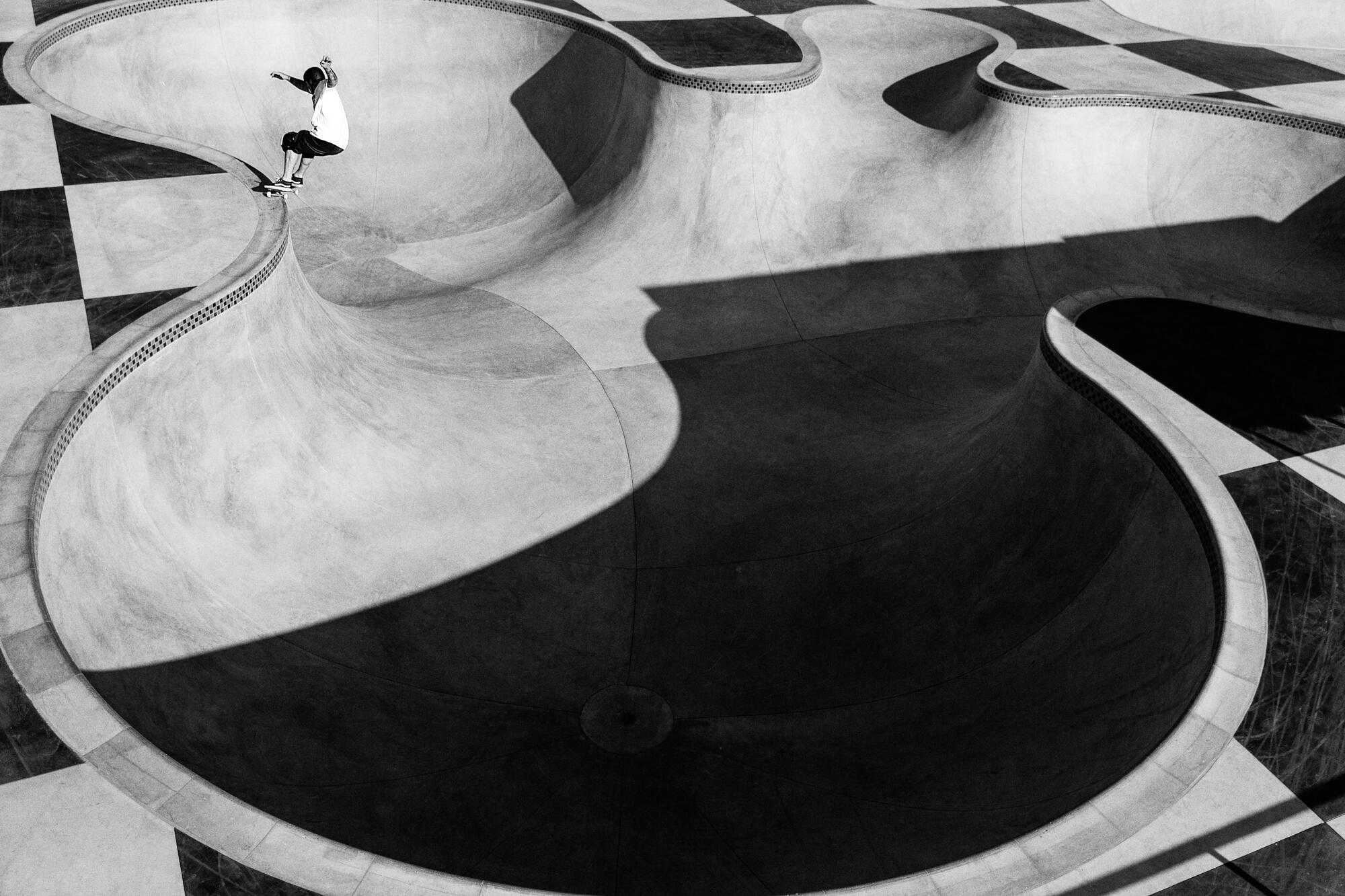
More to Read
Go beyond the scoreboard
Get the latest on L.A.'s teams in the daily Sports Report newsletter.
You may occasionally receive promotional content from the Los Angeles Times.

